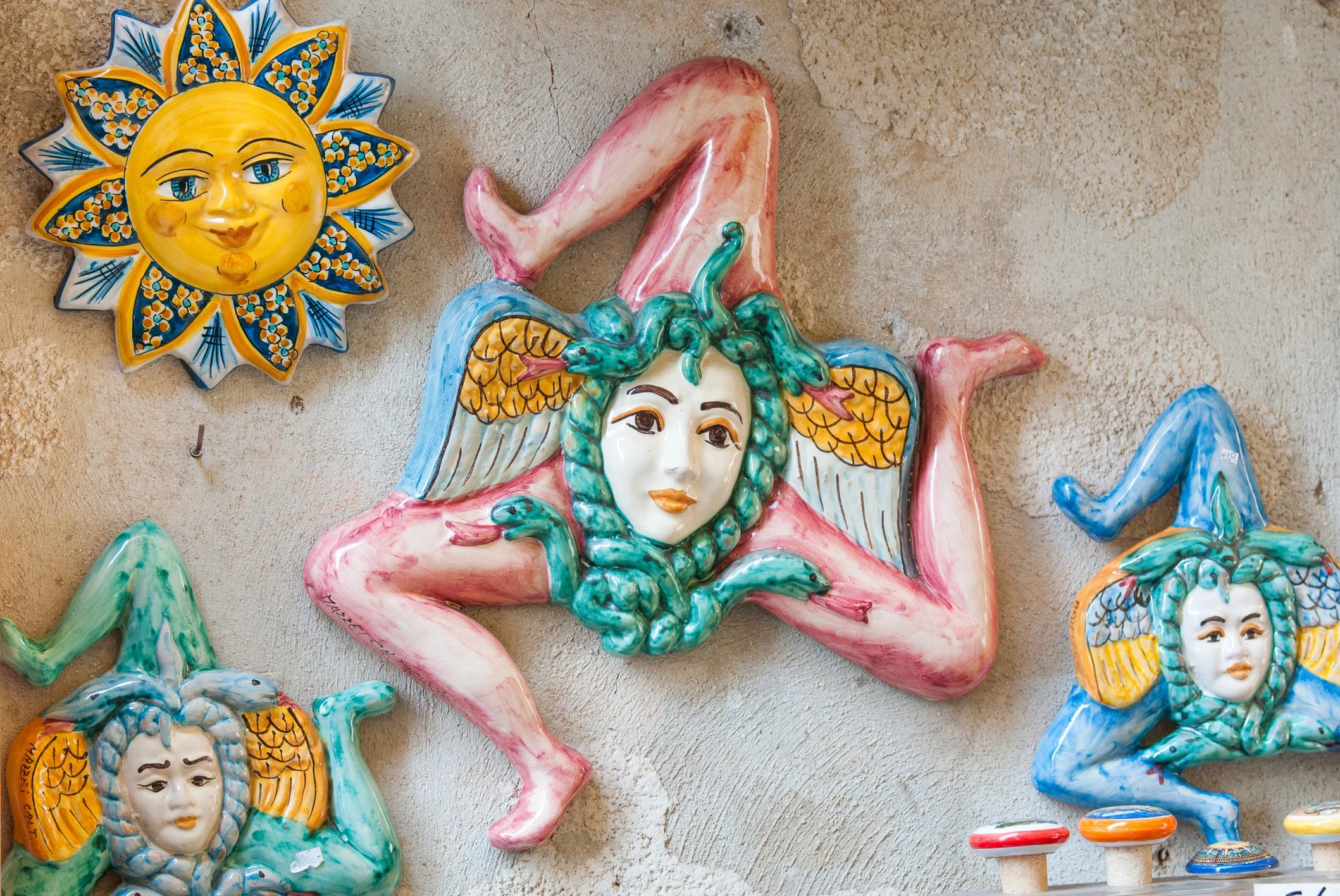Sicily, An Island of Enchantment
“To have seen Italy without having seen Sicily is not to have seen Italy at all, for Sicily is the clue to everything.”
What is enchanting about Sicily? How is its beauty extraordinary? There are hundreds of breathtakingly beautiful islands in the world, but the charm of Sicily is engraved in its history. There is no glimpse, aroma or flavour on this island that does not carry with it the priceless value of its millenary history. Sicily has, in fact, been inhabited since the Bronze Age. Siculi, Elimi and Sicani were the first populations that Phoenicians and Greeks encountered when they landed in Sicily.
Observing its geographical position, it is not difficult to imagine how this island has always attracted the interest of the populations who, from Europe, Asia and Africa, overlooked the Mediterranean.
Sicily, the heart of the Mediterranean, has always been a land of domination and anyone who has passed through the island has left traces of their passage. Traces visible in the numerous archaeological sites and museums of the island, but also latent ones, assimilated by a people in their uses, customs and flavors.
So if in Sicily they tell you about the traditional tuna fishing, know that it is a legacy left by the Phoenicians, even before the Greeks and Romans landed on these coasts. The Greek-Roman history of the island is contained in the ancient symbol of Sicily, the "trinacria", now reported on its flag. The "trinacria" represents a being with three legs, a symbol of the three promontories that define the extreme corners of the island. In the center we find Medusa, a Greek mythological figure to whose snakes ears of wheat were added, a symbol of fertility and an agricultural production that, since Roman times, has characterized the countryside of the Sicilian hinterland.
The latent legacies of the peoples who have crossed this island are also found in Sicilian cuisine. When in Sicily you find yourself in front of a plate of pasta with sardines, know that you are about to take a dip in the great culinary revolution brought to Sicily by the Arabs.
And it is no coincidence that precisely in Mazara del Vallo, the city where the Arabs landed in 827 BC, the largest Tunisian community in Europe is found today and that, walking through the streets of the historic centre of Mazara, you can be catapulted from the wonders of Sicilian Baroque to the alleys of the Casbah. Sicily is a sort of extraordinary and millenary melting pot, but it also has an extraordinary historical continuity, a repetition of events and phenomena that allows this island to continue to be, even today, a land of mixes, assimilations and riches.
In short, when traveling to Sicily you can also believe you want to take a simple vacation, but in reality every step, dive, climb you will do, glimpse you will observe, bite that you will savour will be a journey within the journey of a millenary history. A game of echoes and references that weaves the strings of this extraordinary charm that is Sicily.























